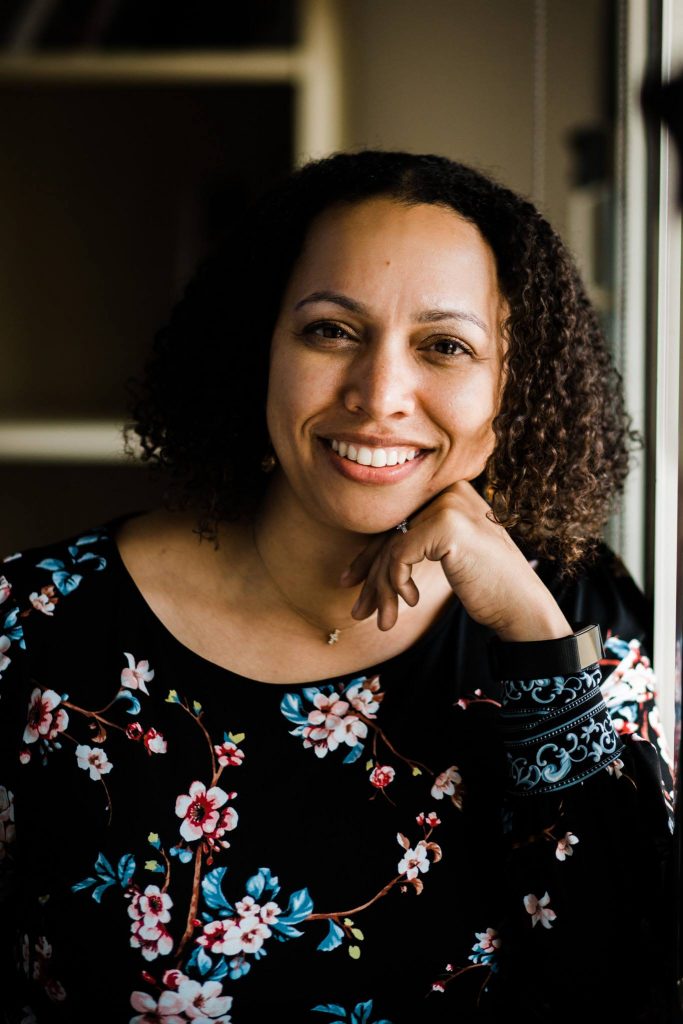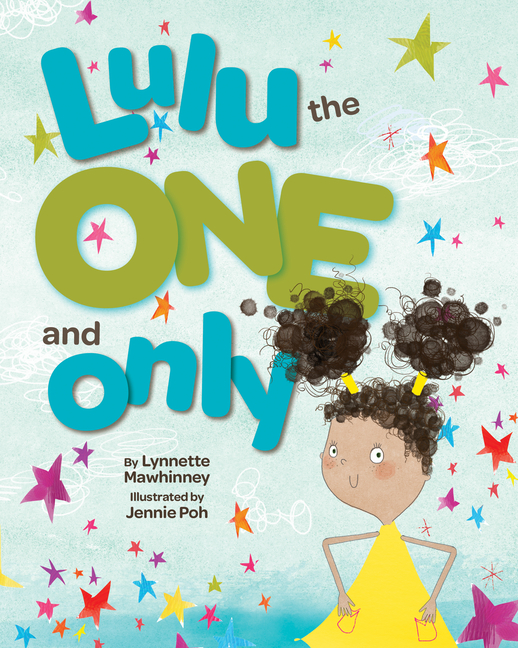TeachingBooks is delighted to welcome author Lynnette Mawhinney as our featured guest blogger this month.
Each month, we ask distinguished authors or illustrators to write an original post that reveals insights about their process and craft. Enjoy!

Discussing Race in the Classroom
By Lynnette Mawhinney, Ph.D.
All through my elementary, middle, and high school years, not once did I open a fiction book in class and the character looked like me. I am biracial (half Black and half white), and I identify as a Black woman. So imagine, I went to school where the student body was all white, my teachers were all white (it wasn’t until I was in graduate school getting my doctorate that I had a Black professor), and the books we read had all white characters or animals with human-like qualities. To be honest, it is a bit of a heartbreaking experience to be rendered invisible on the pages of books. So, I guess it is no surprise that I decided to become a high school English teacher in order for students, like little Lynnette, to see someone like themselves in the classroom. Years later, I now train people to become teachers or who are teachers and, no surprise again, I often teach about the ways to discuss and celebrate race in the classroom.
Discussing about race in the classroom can be uncomfortable for some teachers but provides a powerful experience for all. Currently, more than half the students in the United States are students of Color (e.g. Asian, Black, Latinx, Indigenous, Middle Eastern, and Pacific Islander). That’s a beautiful thing and something to be celebrated and embraced! So, I often tell prospective and current teachers that discussing race in the classroom is like climbing a mountain. A few years ago, I reached the summit of Mt. Kilimanjaro—Africa’s largest mountain at 19,431 feet. It’s a long way up and took 8 days to get there. Just like teaching about race in the classroom, you have to start at the base and build a foundation. Teachers want to find a common language and provide guidelines for the students on how to have these “courageous conversations” (Singleton, 2014). Then you slowly start to walk up the mountain. You don’t go too fast, as the slower you walk, the better it is acclimatizing to the altitude (as they say on Mt. Kilimanjaro, go “pole pole,” which means “slow, slow” in Kiswahili). Teachers and students want to find their pace together as they climb this big mountain.

In climbing Mt. Kilimanjaro, on Day 5 we actually went back down the mountain a couple hundred feet. The reason for this is if you climb up and back down, it helps to acclimate to the altitude even more. Sometimes teachers may have to back track in teaching about race, and that is okay. It makes sure everyone is on board before moving forward again.
Just like climbing a mountain, there may be hurdles along the way (e.g. equipment breaks or the down pour of rain damps your sleeping bag). And, teachers face a persistent hurdle to making curriculum culturally relevant (i.e., connected directly to the lives of the students in the classroom)—the classroom books themselves. There are still not a ton of selection of books featuring racially and ethnically diverse characters or authors. For example, there was a recent report done by the NYC Coalition for Educational Justice called Diverse City, White Curriculum (2020) which explores how the largest and most racially and ethnically diverse school district in America (New York City Public Schools) excludes people of Color from English language arts curriculum. Specifically, there are 42 texts used in the PreK-4 curriculum in the district. Of those 42 books, only two are written by people of Color (1 Latinx author, 1 Asian author, 0 Black authors, 0 Native authors, and 40 white authors). Needless to say, the representation of the characters in the books is also, sadly, minimal. This is where Lulu comes in. I wanted to write a children’s book that can be used in the classroom to start these critical conversations about race.
I wrote the book, Lulu the One and Only (Magination Press, 2020) about a biracial girl (half Black and half white) trying to navigate the world around her. Lulu, looking ambiguously brown, is constantly asked the question, “What are you?” It is a question that often gets under Lulu’s skin. Her big brother, Zane, tells Lulu that she needs to get a power phrase for when people ask this question. Zane’s power phrase is, “I’m magic made from my parents.” Lulu navigates the journey of getting to her power phrase and using it throughout the book. I wanted to provide a book that can be used as a tool for teachers and parents, while students of Color can also see themselves in the pages. The illustrator, Jennie Poh (who is also biracial), really brought these pages to life. There is also a curriculum to go with the book to help teachers in having these critical discussions about race.
This journey about race discussions is all about getting to the peak of wonderment. For example, when I got to the summit of Mt. Kilimanjaro, it was the most thrilling experience and accomplishment. Tears of joy, laughter, singing can all be heard at the top of the mountain. In the classroom, when everyone gets to the summit of teaching and discussing about race, it can be an exhilarating experience for everyone. The journey might have taken time, but it is worth it in the end, and provides a way for students to not be rendered invisible on the pages of the book or in classroom discussions.
Singleton, G. E. (2014). Courageous conversations about race: A field guide for achieving equity in schools. Corwin Press.

Watch this video book trailer for Lulu the One and Only.
Explore this Curriculum Guide for Lulu the One and Only.
Visit Lynnette Mawhinney’s personal website.
Text and images are courtesy of Lynnette Mawhinney and may not be used without her expressed written consent.


Leave a Reply